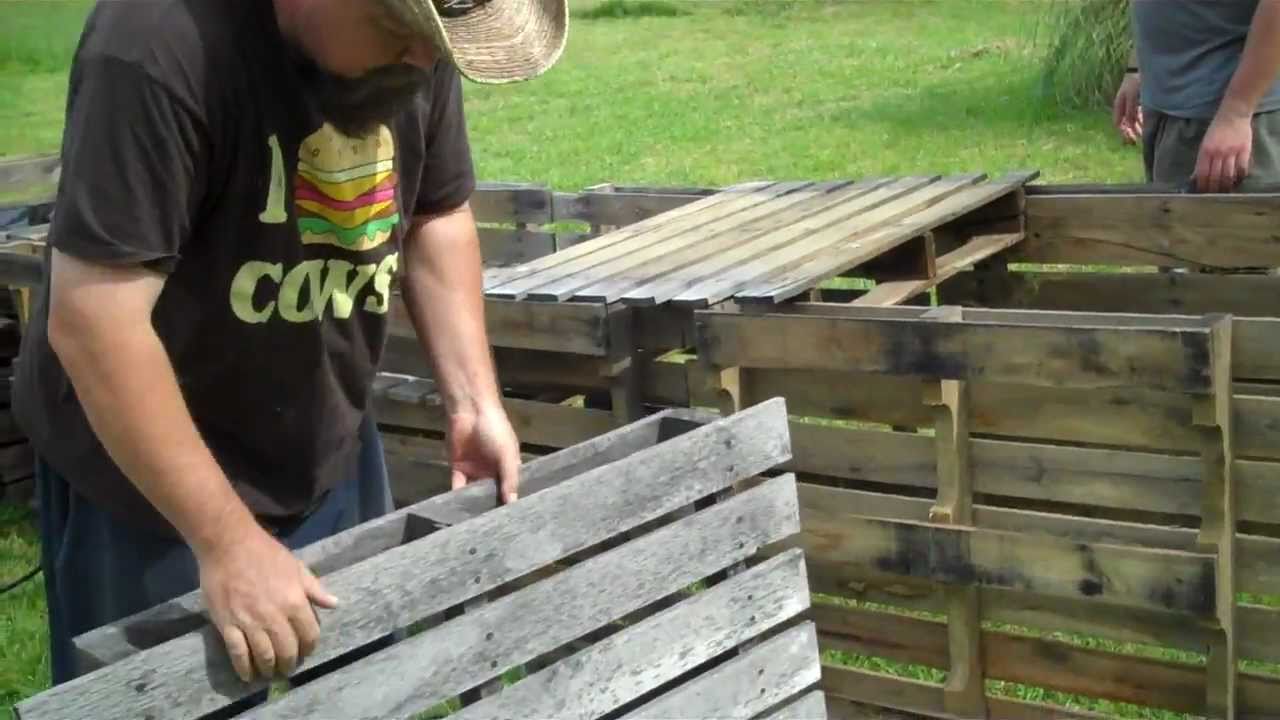Building a Raised Bed for Square Foot Gardening
One of the beauties of the system: no digging! The “new” version of square foot gardening uses raised beds, and a soil mix placed in that bed (which we’ll get to). Yes, you can buy raised bed systems, but they’re also pretty easy to put together yourself. Most plans (including those in the book itself) use lumber (untreated redwood or ceder is recommended), but a number of other materials (that you may have on hand) can work just as well.
- Bricks: This was my solution… had a bunch of them laying around after we pulled up part of the backyard patio. I stacked them three high (to get a bit more than the minimum six-inch depth), and didn’t worry about mortaring or otherwise attaching them to one another. It’s not as pretty as some solutions, but works well, and cost me nothing… take a look… as you’ll see, it withstood a pretty nasty hail storm.
- Cinder blocks: Yep, they’re heavy, but they also provide the needed depth… and, as a number of members over at Gardenweb point out, they also give you extra planting space for herbs, flowers, or even strawberries.
- Recycled tires: Nope, you don’t fill and stack them Earthship style (though I guess you could)… you can actually make boards out of old steel-belted car tires. This plan from the Noble Foundation is a bit more labor-intensive, but cheap and unique.
- Wooden pallets: Like tires, wooden pallets are everywhere… and often end up getting thrown away. You can find numerous sets of instructions out there on how to turn those pallets into raised beds… the best I’ve found come from 5 on the Farm (below), the Gardenhacker.com podcast, and weblamer on Instructables.
Square foot dividers for your raised bed
In the book, Mel makes it very clear that a square foot garden without clear divisions of the separate plots isn’t “official,” and shouldn’t use the name. Now, this may not matter to you — the square foot gardening police aren’t going to show up — but since plants don’t all necessarily grow straight upward, dividers are helpful. Some of the materials you can use for squaring off your raised beds:
- Twine: That’s what I use, and it works well with my stacked brick beds… I mark the one-foot divisions on the bricks themselves, and then tie the twine around them at that point.
- Mini blind slats: Mel recommends these in the book, and suggests looking for them at thrift stores (if you don’t already have old ones stashed away somewhere).
- Wood lath: Another recommendation from the book…
- Bamboo stalks: That’s what user Peela at The Well-Trained Minds forums recommends. I use these for staking up plants that need it, but they’d work well for dividers, also… and give your garden a unique look.
Next… making compost for “Mel’s Mix” and laying out your plants (click the page link below)


Skot
Love it!
Started using SFG a couple of years ago. Since then I’ve moved onto Permaculture, but still use many of the philosophies to produce a ton of veggies from small spaces.
Jeff McIntire-Strasburg
Thanks, Skot! You know, I did look around for some information on overlap between SFG and permaculture… if you know of any good sources, I’d love to add them.
ambikahealing
Hello! I have been gardening in the high country of Breckenridge, CO at 9,600 feet for 3 years now. I do a raised bed garden because the soil is so important–I use a mix of top soil, compost, and horse manure–and the rocky soil in the mountains here are not ideal. The raised bed design allows me to have better soil, and in addition, I build a cold frame which protects my plants from the occasional hail storms that we get in the summer. The cold frame is made inexpensively using pex tubing, commonly used in plumbing, and painter’s plastic. It helps hold in the heat during cold nights as well, as it is common for us to get a frost into the months of June. The cold frame helps to extend the growing season, but you have to water almost daily because it does not allow any rain water in.
Terri
I love the whole square-foot gardening idea. I’ve used in with small gardens and large, and it always increases my productivity. I didn’t realize that there was an updated version of the book. Must buy!